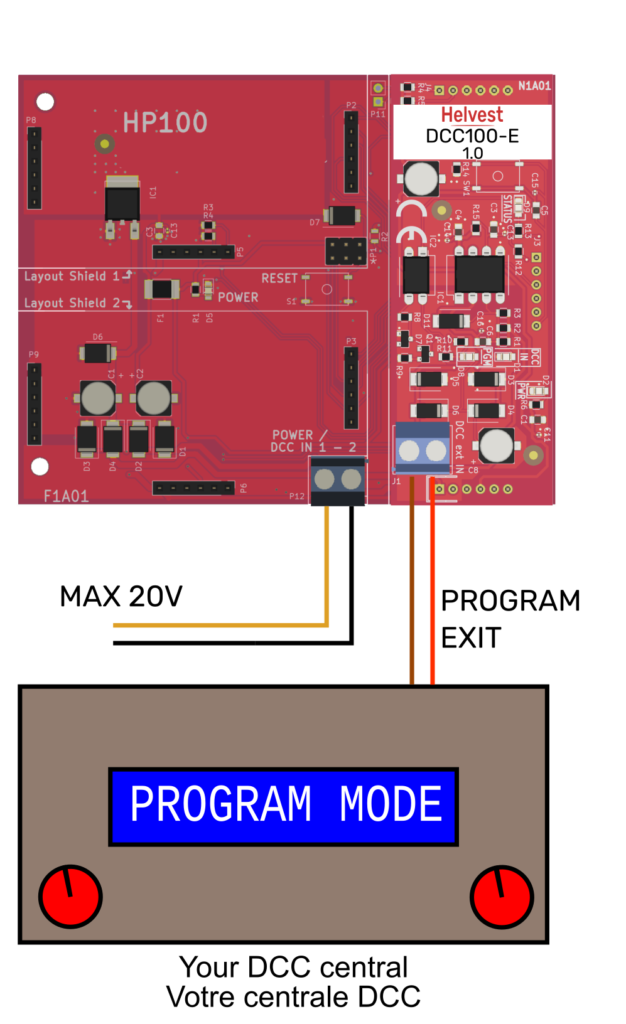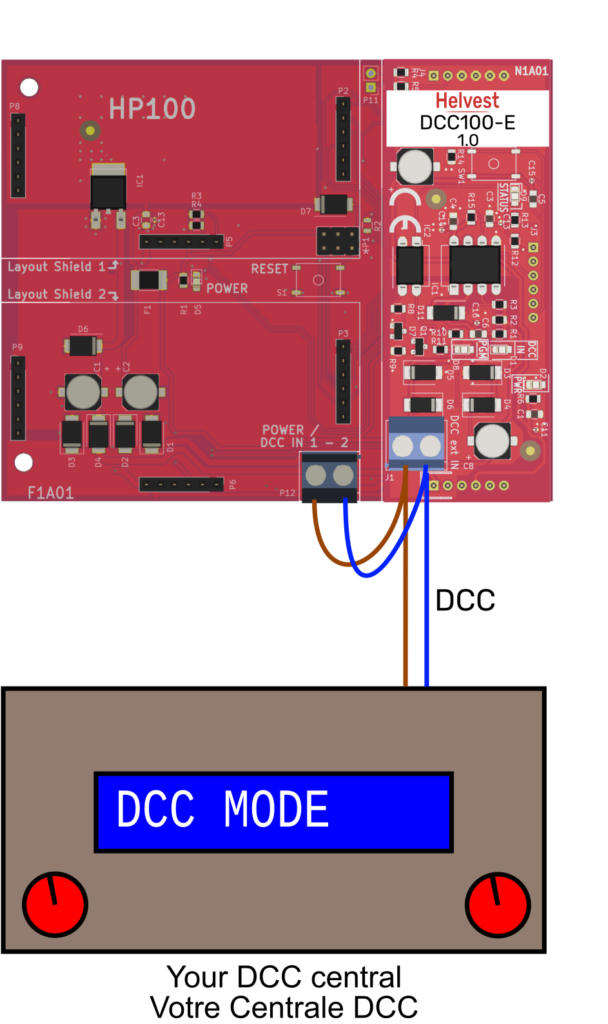Customers like the flexibility of the externally powered decoder, thanks to the DCC100-E module. Here we provide some additional information on the questions we are most frequently asked.
1. what is the criterion for choosing between an external power supply and the DCC-powered decoder?
We believe that whenever possible, an external power supply is preferable. This means you must use a decoder with DCC100-E and have your own power source for turnouts and signals.
This allows you to use DCC only to give control commands to the decoder without draining energy from it, which is valuable for powering trains. This is possible with the DCC100-E module and an additional analogue power supply between 12 and 20V, DC or AC (e.g. if you have an old transformer that you used in an analogue system before).

In this image, we reiterate the meaning of ‘external power supply’. The control unit only sends the DCC for instructions (right-hand wires in the picture), while the decoder is connected to another, less ‘specialised’ power source
Allora quando conviene alimentare anche gli accessori con il DCC? Sicuramente solo in impianti molto piccoli, quando non si ritenga opportuno avere un’altra coppia di fili per portare un’altra alimentazione sul plastico.
So when can it be meaningful to supply accessories with DCC as well? Certainly only in very small layouts where it seems impractical to use another pair of cables to power the accessories.
2. clarification of the connections for programming.
The decoder must be programmed in DCC in the same way as a locomotive.
The command station must be connected only to the decoder to be programmed. Which wires of the central unit have to be connected depends of course on the central unit itself.
In any case, the decoder must be supplied via the external power supply!

For programming, it is essential to connect the decoder to the output of the control unit dedicated to programming.
However, external power must always be supplied.
3. What if I want to do something flexible?
Some model railroaders prefer to have a single decoder that can be operated with either DCC or a separate power supply, no matter what. He may want to switch from one mode to another as he develops his project, or he may want to do some testing.
With the DCC100-E this is also possible: Do you want to power the decoder via DCC? Connect the two terminals together as shown and you’re done.

Do you already own a DCC100-E and prefer to power the decoder with DCC only? It is of course possible, just connect the two terminals together as shown in the figure.